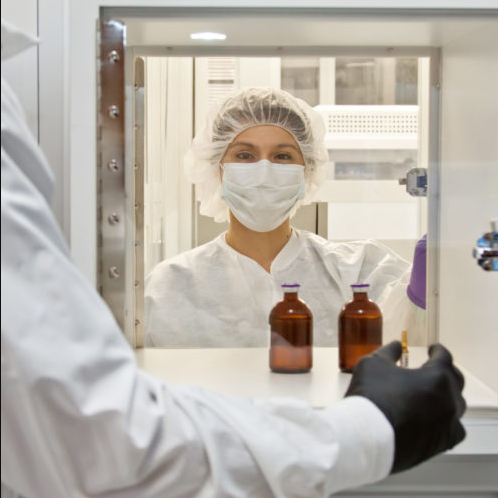Your cart is currently empty!

SOP for Responsibility of Compounding Personnel in sterile preparation
SOP for Responsibility of Compounding Personnel in sterile preparation
Compounding personnel is responsible for ensuring that Compounding sterile preparations (CSPs) are accurately identified, measured, diluted, and mixed and are correctly purified, sterilized, packaged, sealed, labeled, stored, dispensed, and distributed.
These performance responsibilities include maintaining appropriate cleanliness conditions and providing labeling and supplementary instructions for the proper clinical administration of Compounding sterile preparations (CSPs).
Compounding supervisors shall ensure through either direct measurement or appropriate information sources that specific CSPs.
Maintain their labeled strength within monograph limits for USP articles, or within 10% if not specified, until their beyond-use dates.
All CSPs are prepared in a manner that maintains sterility and minimizes the introduction of particulate matter.
A written quality assurance procedure includes the following in-process checks that are applied, as is appropriate, to specific CSPs.
Accuracy and precision of measuring and weighing
The requirement for sterility methods of sterilization and purification
Safe limits and ranges for the strength of ingredients
Bacterial endotoxins, particulate matter, and pH
Labeling accuracy and completeness
Beyond-use date assignment and
Packaging and storage requirements.
The dispenser shall, when appropriate and practicable, obtain and evaluate results of testing for identity, strength, purity, and sterility before a CSP is dispensed.
Qualified licensed healthcare professionals who supervise compounding and dispensing of CSPs shall ensure that the following objectives are achieved.
1. Compounding personnel are adequately skilled, educated, instructed, and trained to correctly perform and document the following activities in their sterile compounding duties:
a. Perform antiseptic hand cleansing and disinfection of nonsterile compounding surfaces.
b. Select and appropriately don protective gloves, goggles, gowns, masks, and hair and shoe covers.
c. Use laminar flow clean-air hoods, barrier isolators, and other contamination control devices that are appropriate for the risk level
d. Identify, weigh, and measure ingredients; and
e. Manipulate sterile products aseptically, sterilize high-risk level CSPs, and label and quality inspect CSPs.
2. Ingredients have their correct identity, quality, and purity.
3. Opened or partially used packages of ingredients for subsequent use in CSPs are properly stored under restricted access conditions in the compounding facility. Such packages cannot be used when visual inspection detects unauthorized breaks in the container, closure, and seal when the contents do not possess the expected appearance, aroma, and texture; or when the contents do not pass identification tests specified by the compounding facility and when either the beyond-use or expiration date has been exceeded.
4. To minimize the generation of bacterial endotoxins, water-containing CSPs that are nonsterile during any phase of the compounding procedure are sterilized within 6 hours after completing the preparation.
5. Sterilization methods achieve sterility of CSPs while maintaining the labeled strength of active ingredients and the physical integrity of the packaging.
6. Measuring, mixing, sterilizing, and purifying devices are clean, appropriately accurate, and effective for their intended uses.
7. Potential harm from added substances and differences in rate and extent of bioavailability of active ingredients other than the oral route of administration is carefully evaluated before such CSPs are dispensed and administered.
8. Packaging selected for CSPs is appropriate to preserve the sterility and strength until the beyond-use date.
9. While being used, the compounding environment maintains the sterility or the pre-sterilization purity, whichever is appropriate, of the CSP.
10. Labels on CSPs list the names and amounts or concentrations of all ingredients. Before being dispensed, and or
administered, the clarity of solutions are visually confirmed also the identity and amounts of ingredients, procedures to prepare and sterilize CSPs, and specific release criteria are reviewed to assure their accuracy and completeness.
11. Beyond-use dates are assigned based on direct testing or extrapolation from reliable literature sources and other
documentation
12. Procedures for measuring, mixing, dilution, purification, sterilization, packaging, and labeling conform to the correct sequence and quality established for the specified CSP.
13. Deficiencies in compounding, labeling, packaging, and quality testing and inspection can be rapidly identified and corrected.
14. When time and personnel availability permit, compounding manipulations and procedures are separated from
post compounding quality inspection and review before CSPs are dispensed and administered.
During CSPs need to maintain high standards for the quality and control of processes, components, and environments; and for the skill and knowledge of personnel who prepare CSPs.
The rigor of in-process quality-control checks and of post compounding quality inspection and testing increases corresponding to the potential hazard of the route of administration.
For example
Non-sterility, excessive bacterial endotoxin contamination, large errors in the strength of correct ingredients, and incorrect ingredients in CSPs are potentially more dangerous to patients when the CSPs are administered to the vascular and central nervous systems than when administered by most other routes.